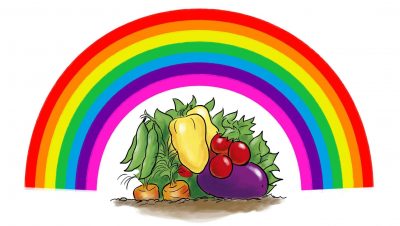Balanced Diet Information Sheet
 This information sheet is part of our overall look at Nutrition, one of our ten health topics that children can learn and share.
This information sheet is part of our overall look at Nutrition, one of our ten health topics that children can learn and share.
A balanced diet is one where a person is eating the correct amount of a combination of GO, GROW, and GLOW foods. Children need to eat many times each day (e.g. six times each day 3 meals + 3 snacks). This gives them the energy all day.
Avoid sweets, soda, white bread, and jam. These take away the appetite for good food, cause dental decay, and form bad habits.
GO foods give us energy to be active, work, and learn each day. People who do physical labour, children, and pregnant and breastfeeding women need lots of these foods. GO foods include grains like maize, millet, rice, wheat, and sweet food like sugarcane, honey, sugar, and roots like potato, yam and sweet potato. Fats like margarine and oils are also GO foods.
GROW foods work in the body to help us grow and keep us strong and healthy. School age children should grow a few centimetres and gain a few kilograms each year. Pregnant and breastfeeding women and anyone who is sick should also get enough protein. Examples of GROW foods are fish, meat, eggs, milk products, some grains, beans, seeds and nuts. Meat can be expensive, but legumes/pulses like beans and groundnuts are good protein foods.
GLOW foods are rich in vitamins and minerals that help protect us from diseases by helping our bodies work well and fight off illness. All foods have some vitamins and minerals, but fruits and vegetables are especially good GLOW foods. Eating fruits and vegetables of many colours is an easy way to get what we need. For example: mango, banana, papaya, oranges, green leafy vegetables, okra, cauliflower and pumpkin are all high in vitamins and minerals.
Food with LOW or NO Nutrition
Food and drinks that lack nutrition and can be bad for health include cake, candies, chips, sodas, processed foods made in factories, salted snack foods (potato crisps, highly salted and/or sugared nuts), gum, candy, sweet desserts, fried fast food and sugary carbonated beverages. These foods contain too much sugar or salt, fat and chemicals and not enough nutrition.
Sometimes when the family income gets higher the food they eat gets worse! White bread is not as nutritious as porridge; white maize (chima) that has been soaked in water then cooked is much less good for the body then unsoaked maize flour or maize on the cob.
Eating this type of food is bad for the eyes, skin and teeth and can lead to high blood pressure, diabetes or other health problems. Unfortunately, in many places ‘sweets’, sweet drinks and fast food are given to children as treats.
Food with low nutrition is VERY bad for young children whose growing bodies and brains are developing fast. They need the best food a family can give. Giving bad food takes away the appetites of children so they refuse good food. High levels of bad food will lead to a child becoming malnourished.
In some countries, the availability of bad food leads to people becoming unhealthy and overweight (or obese). This is hard to treat and causes suffering.
Children grow healthy and strong on the right amount of natural food.
Read more about good Nutrition (in many languages too) or
download our Nutrition poster from the free resource section!




